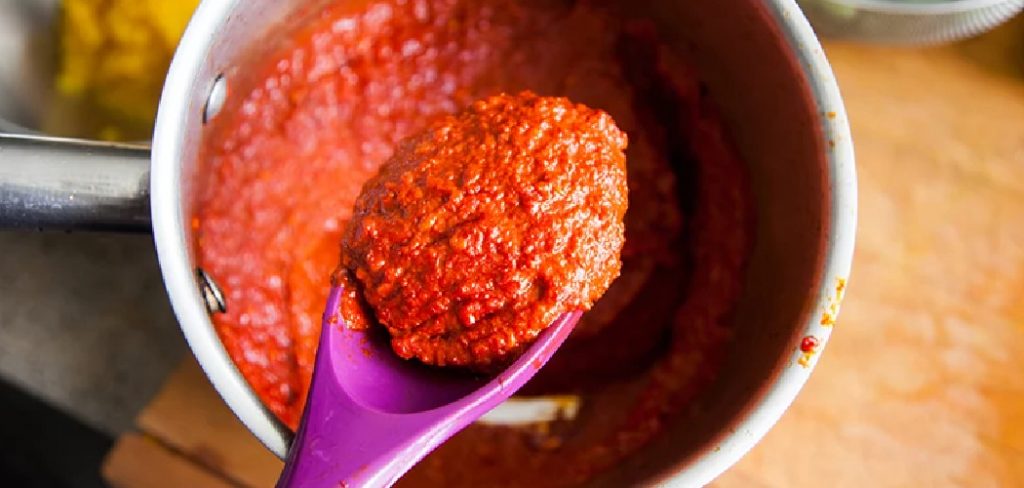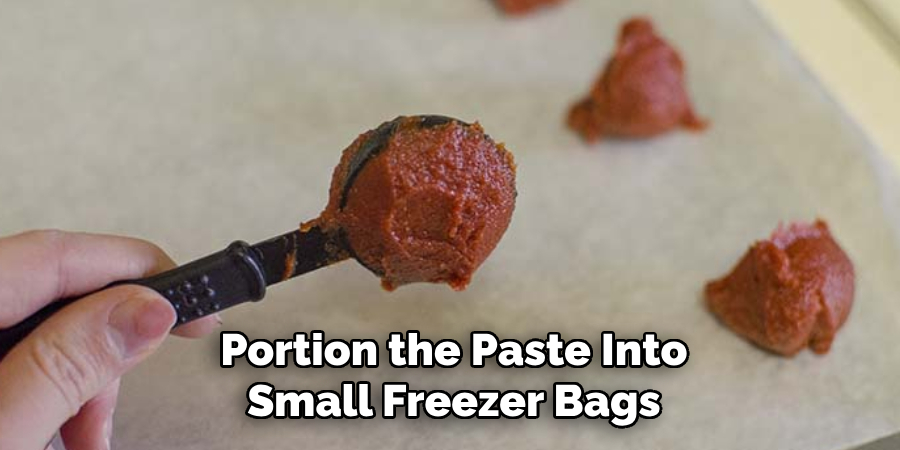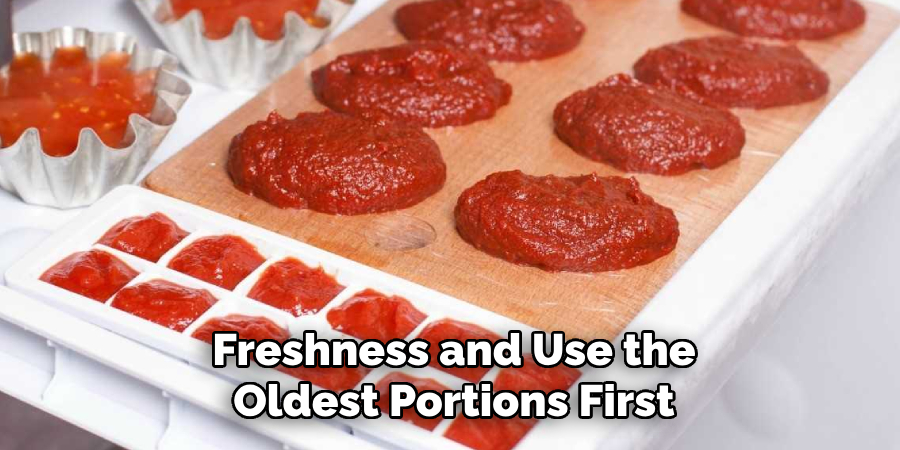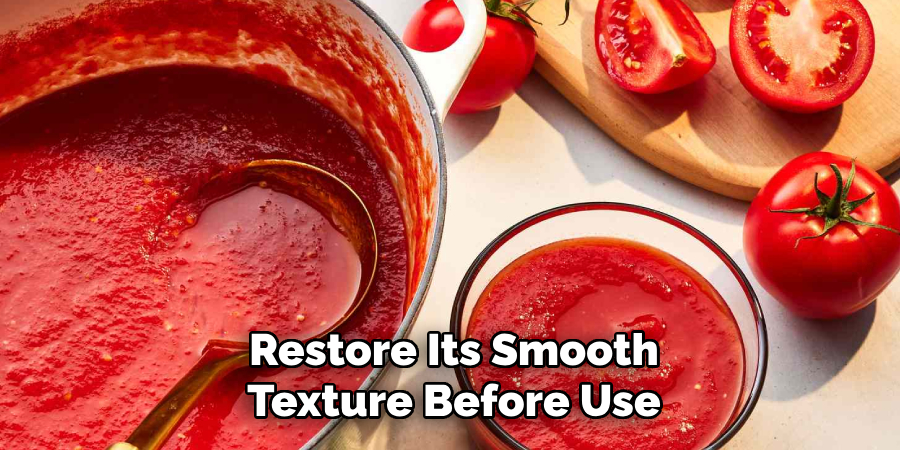Tomato paste is a versatile ingredient often used in various recipes to add depth and flavor. However, many recipes require only a small amount, leaving the rest unused. Storing leftover tomato paste properly is essential to prevent waste and ensure its freshness for future use. Freezing tomato paste is an efficient solution that preserves its quality while extending its shelf life. This guide explores the key aspects of how to store tomato paste in freezer.

Importance of Tomato Paste in Cooking
Tomato paste is a staple in many kitchens due to its concentrated flavor and versatility. It serves as a foundation for countless dishes, enhancing soups, stews, sauces, and marinades with a rich and savory depth. Unlike fresh or canned tomatoes, tomato paste delivers an intense taste with just a small amount, making it an efficient way to build layers of flavor in recipes. Additionally, its thick consistency helps to thicken dishes and create a more robust texture. Whether you’re crafting a classic marinara sauce or adding complexity to a curry, tomato paste is an essential ingredient that elevates your culinary creations.
Shelf Life of Tomato Paste
The shelf life of tomato paste depends on how it is stored. If left unopened in a can or jar, it can last for several months past its “best by” date when kept in a cool, dry place. However, once opened, tomato paste should be transferred to an airtight container and refrigerated, where it typically stays fresh for about five to seven days. For extended storage, freezing is an ideal option. Properly frozen tomato paste can maintain its quality for up to three months or more, allowing you to use it conveniently in small portions without worrying about spoilage. Always label containers with the date of freezing to keep track of its usability.
10 Methods How to Store Tomato Paste in Freezer
1. Freezing in Ice Cube Trays for Convenient Portions
One of the best ways to store tomato paste is by portioning it into ice cube trays. This method allows you to freeze small, pre-measured amounts, making it easier to use in future recipes. Simply spoon the paste into each compartment, smooth the surface, and freeze until solid. Once frozen, transfer the cubes to a resealable freezer bag, ensuring all air is removed before sealing. This method provides easy access to single-serving portions whenever needed.

2. Wrapping Spoonfuls in Plastic Wrap for Quick Use
For those who prefer single-use portions, individually wrapping spoonfuls of tomato paste in plastic wrap is a great alternative. Scoop out tablespoon-sized portions, wrap them tightly, and place them on a baking sheet. Freeze until solid, then transfer the wrapped portions into an airtight container or freezer bag. This method ensures that only the needed amount is thawed, minimizing waste and preserving freshness.
3. Using a Silicone Muffin Tin for Larger Servings
If you frequently use tomato paste in larger quantities, consider freezing it in a silicone muffin tin. Fill each cavity with two to three tablespoons of paste and freeze until solid. Once frozen, remove the paste portions and store them in a freezer-safe bag. This method is particularly helpful for those who cook in bulk and need larger portions at a time.
4. Spreading on a Parchment-Lined Tray for Thin Freezing
For a space-saving solution, spread a thin layer of tomato paste onto a parchment-lined baking sheet. Once frozen, break it into smaller pieces and store them in an airtight bag or container. This method allows for easy portioning without the need for pre-measuring, as you can simply break off the desired amount when needed.
5. Storing in Small Freezer Bags for Minimal Air Exposure
Air exposure can cause freezer burn and degrade the quality of tomato paste over time. To prevent this, portion the paste into small freezer bags, flattening them before sealing. This method not only helps preserve freshness but also allows the paste to freeze quickly and thaw evenly. Label each bag with the date to ensure the oldest portions are used first.

6. Vacuum-Sealing for Long-Term Storage
For the longest shelf life, vacuum-sealing tomato paste is an excellent option. By removing all air from the packaging, vacuum sealing prevents oxidation and freezer burn, preserving the paste’s flavor and texture for months. Portion the paste into small amounts before vacuum-sealing to make it easier to use in cooking.
7. Freezing in Glass Jars for Sustainable Storage
For those who prefer a plastic-free option, small glass jars are an effective way to store tomato paste. Fill freezer-safe jars with the paste, leaving about an inch of space at the top to allow for expansion. Ensure the jars are sealed tightly before freezing. When using this method, allow the jar to thaw in the refrigerator to prevent cracking due to sudden temperature changes.
8. Making Tomato Paste Discs for Efficient Stacking
Spoon tomato paste onto a baking sheet in small mounds and flatten them into discs. Once frozen, transfer them to a freezer bag. This method allows for efficient stacking and easy retrieval of portions as needed, making it a great space-saving technique.
9. Pre-Mixing with Olive Oil for Easy Cooking
For recipes that require sautéing tomato paste in oil, consider mixing it with olive oil before freezing. Store the mixture in ice cube trays or small freezer-safe containers. This method makes cooking easier, as the paste is already pre-mixed with oil, allowing for a seamless transition into the pan.
10. Labeling and Dating for Proper Organization
Regardless of the storage method used, always label and date your tomato paste containers or bags. This practice ensures that you keep track of its freshness and use the oldest portions first. Proper labeling helps reduce food waste and makes meal preparation more efficient.

Maintenance and Upkeep of Frozen Tomato Paste
Proper maintenance and upkeep of frozen tomato paste are essential to preserve its flavor and quality for as long as possible. Regularly check your freezer to ensure it maintains a consistent, cold temperature, ideally at 0°F (-18°C) or lower, to prevent spoilage. Organize your frozen tomato paste portions to avoid overcrowding or unnecessary air exposure, which can lead to freezer burn. Periodically inspect the airtight seal of freezer bags, containers, or vacuum-sealed packaging to ensure they remain intact. Additionally, always use the tomato paste by the labeled dates to guarantee freshness. By keeping your freezer clean and defrosted when necessary, you can create an optimal storage environment for your frozen tomato paste and other foods.
Troubleshooting Common Issues
Despite best efforts, certain issues can arise when freezing and storing tomato paste. Knowing how to address these problems can help maintain its quality and usability.
1. Freezer Burn
Freezer burn occurs when the tomato paste is exposed to air, leading to dehydration and loss of flavor. To avoid this, ensure containers or freezer bags are airtight and fully sealed. For added protection, consider wrapping portions tightly in plastic wrap before placing them in a freezer bag.
2. Loss of Flavor Over Time
If tomato paste has been stored for too long, it may lose its vibrant flavor. Always label containers with the freezing date and adhere to the typical storage recommendation of 3-6 months for optimal flavor. Using a vacuum sealer can also help extend its shelf life by preventing oxidation.
3. Difficulty in Removing Portions
When tomato paste portions are frozen without pre-measuring or adequate separation, it can be difficult to retrieve just the right amount. To resolve this, pre-portion the paste using ice cube trays, muffin tins, or parchment-lined trays before freezing. This ensures that you can access the exact quantity needed without thawing the entire container.
4. Cracked or Broken Glass Jars
When using glass jars for freezing, sudden temperature changes can cause them to crack or break. Always use freezer-safe jars with enough headspace to accommodate the expansion of the paste as it freezes. Thaw jars in the refrigerator instead of at room temperature to prevent thermal shock.
5. Greasy or Grainy Texture After Thawing
Improper freezing or thawing methods may result in a greasy or grainy texture. To prevent this, freeze the paste at a consistent temperature and thaw it in the refrigerator rather than in warm or hot environments. Stir the paste thoroughly to restore its smooth texture before use.

6. Odd Smells or Spoilage
If your frozen tomato paste develops an off smell or unusual appearance, it may have spoiled due to a broken seal or improper storage conditions. Discard any paste that appears spoiled, and double-check the integrity of your storage containers in the future. Ensuring your freezer maintains a consistent, cold temperature can also help reduce the risk of spoilage.
Conclusion
Freezing and storing tomato paste effectively can save time, reduce food waste, and ensure you always have an essential ingredient ready for your favorite recipes. By using proper techniques such as portioning, vacuum-sealing, or freezing in sustainable containers, you can preserve the paste’s flavor and quality for months. Thanks for reading, and we hope this has given you some inspiration on how to store tomato paste in freezer!
Professional Focus
Angela Ervin, a former interior designer turned blogger, specializes in kitchen design and renovations. Through her website, she blends her passion for cooking with design expertise, sharing practical and creative ideas. Known for balancing functionality and beauty, Angela’s insightful content has made her a trusted voice in home design and lifestyle.
About the Author
Angela Ervin, an experienced interior designer and blogger, combines her passion for kitchen renovations with storytelling. Living in Petersburg with her family, she enjoys cooking and testing her projects firsthand. Known for her humor and relatable style, Angela shares creative, functional design insights through her content, making her a trusted voice in home design.
Education History
University: Virginia Commonwealth University
Degree: Bachelor of Fine Arts (BFA) in Interior Design
- Angela’s education at VCU focused on mastering core interior design principles, including spatial planning, color theory, materials selection, and sustainable design practices.
- She gained hands-on experience through studio projects and collaborative design exercises, which honed her ability to create functional and aesthetically pleasing environments.
- Her coursework also emphasized problem-solving and practical applications of design, preparing her for real-world projects like her self-directed kitchen renovations.
- The program’s strong foundation in both technical skills and creative expression shaped Angela’s ability to seamlessly integrate form and function in her work.


